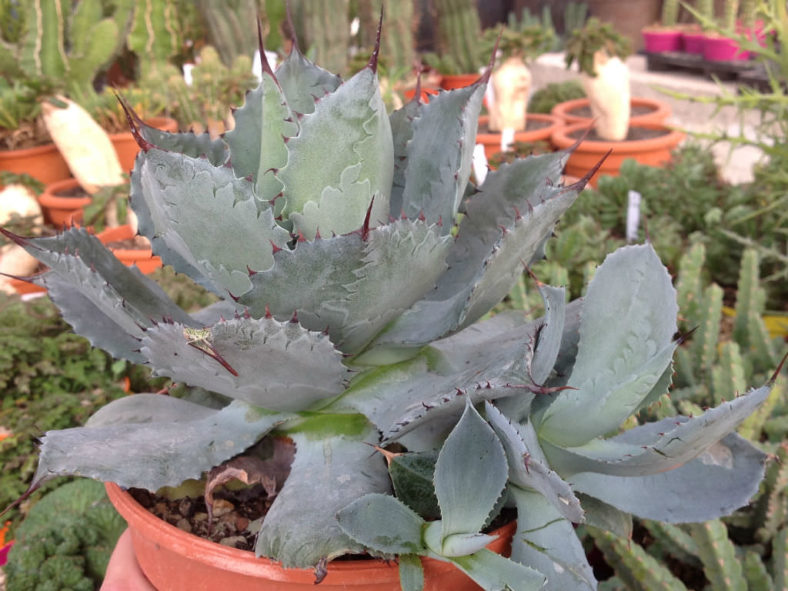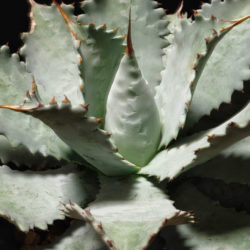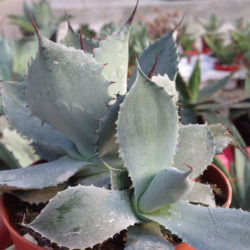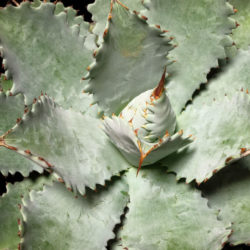Scientific Name
Agave potatorum 'Cameron Blue'
Common Name(s)
Butterfly Agave
Synonym(s)
Agave 'Cameron Blue'
Scientific Classification
Family: Asparagaceae
Subfamily: Agavoideae
Genus: Agave
Description
Agave potatorum 'Cameron Blue' is a small succulent that forms open, symmetrical rosettes of blue-green leaves with reddish-brown marginal spines on tubercle-like prominences and a longer terminal spine. The rosette can grow up to 8 inches (20 cm) tall and 18 inches (45 cm) in diameter, solitary or slowly clumping. The leaves are up to 6 inches (15 cm) long and 3 inches (7.5 cm) wide. The scalloped patterns on the leaves are caused by spines and teeth pressing into the flesh of inner leaves before they unfurl.
Origin
Agave potatorum 'Cameron Blue' is a cultivar of Agave potatorum.

Hardiness
USDA hardiness zone 9b to 11b: from 25 °F (−3.9 °C) to 50 °F (+10 °C).
How to Grow and Care
Agave is not a difficult plant to grow. They're slow-growing and dramatic and will even thrive on a bit of neglect. If you're the type of person who likes to fuss with houseplants and water a lot, Agave is probably not the plant for you. If, however, you're the type of person who likes to set it and forget it, and you have a sunny window, Agave might be the way to go. Be aware that some large varieties will eventually outgrow your room (unless you have a large greenhouse), and Agave can be aggressive. They have irritating sap and sometimes very sharp thorns that can cause injuries to small children and even pets.
In general, Agaves do not need to be repotted every year. Most species commonly found in cultivation grow slowly and take long to outgrow their pot. It's also best to handle your Agave as little as possible since they do not like to be disturbed. When repot, refresh the spent soil with a new potting mix and make sure the plant is firmly anchored in its pot.
See more at How to Grow and Care for Agave.
Links
- Back to genus Agave
- Succupedia: Browse succulents by Scientific Name, Common Name, Genus, Family, USDA Hardiness Zone, Origin, or cacti by Genus
Photo Gallery
Click on a photo to see a larger version.


